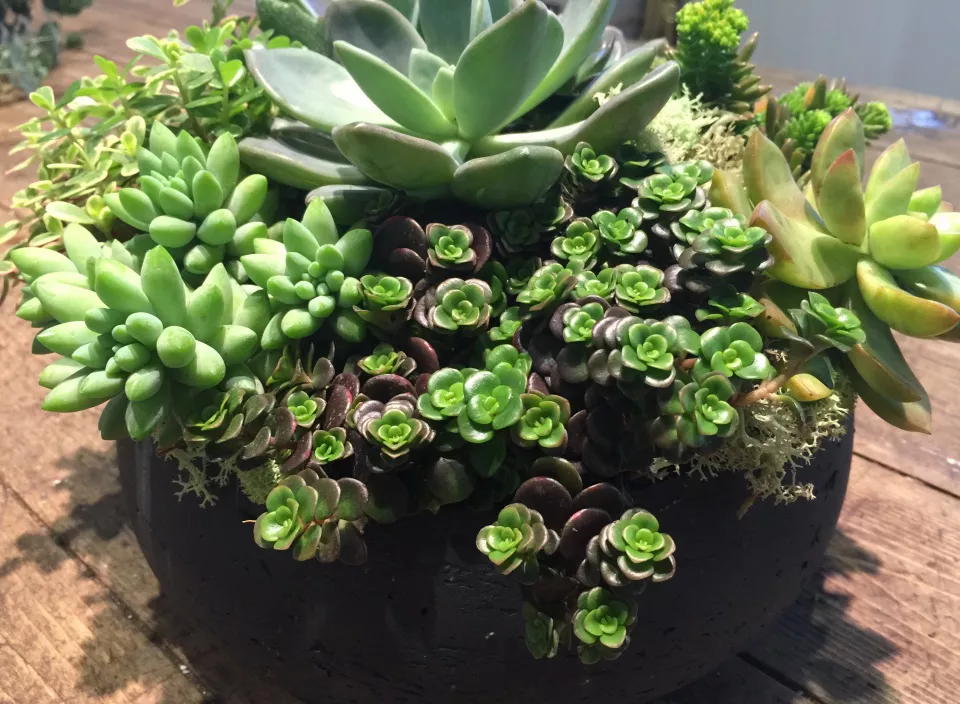Succulents have gained tremendous popularity in the world of gardening and interior décor, admired for their unique appearance, low maintenance requirements, and adaptability to various climates. Yet, where do succulents come from, and what is the history behind these captivating plants?
The World of Succulent Diversity
To understand the origins of succulents, we must first appreciate their incredible diversity. Succulents are a group of plants adapted to arid environments. They have evolved a variety of unique features that allow them to thrive in conditions where water is scarce. From the tall saguaro cacti of the Sonoran Desert to the delicate echeverias of Mexico, succulents encompass a wide range of shapes, sizes, and adaptations.
Succulents of the Americas
The Americas are home to an abundance of succulent species, many of which have become iconic in the world of gardening. The deserts of North America, including the southwestern United States and Mexico, are known for their diverse succulent flora. Iconic species such as the saguaro cactus, agave, and yucca are prominent examples of the region’s unique succulent adaptations.
African Succulent Wonders
Africa boasts a rich diversity of succulents, particularly in its southern regions. The arid landscapes of countries like South Africa and Namibia are home to an array of succulent treasures. Notable African succulents include the quiver tree (Aloe dichotoma), lithops (living stones), and the resilient Welwitschia mirabilis, one of the oldest living plants on Earth.
Australasia’s Unique Succulents
Australasia, including regions like Australia and New Zealand, is not often the first place that comes to mind when discussing succulents. However, this part of the world is home to its unique succulent species. Some remarkable examples include the kangaroo paw (Anigozanthos spp.), various native senecios, and the unusual underground-dwelling Triodia grass tree.
Asian Succulent Marvels
Asia’s contribution to the world of succulents is equally fascinating. Regions like Madagascar, India, and the Middle East are known for their succulent riches. Notable succulent plants from these areas include the Madagascar palm (Pachypodium spp.), the unusual adenium (desert rose), and various members of the Euphorbia genus.
The Role of Adaptations in Succulent Origins
Succulents have developed a wide range of adaptations that have allowed them to thrive in some of the harshest environments on Earth. These adaptations include fleshy leaves or stems that store water, reduced surface area to minimize water loss, and specialized root systems that can quickly absorb water when it becomes available.
Human Interaction and Cultivation
While many succulents are native to arid regions, humans have played a significant role in their spread and cultivation. The allure of succulents as ornamental plants has led to their introduction to new regions worldwide. Today, succulents are grown in homes, gardens, and greenhouses across the globe, making them accessible to plant enthusiasts from various backgrounds.
The Future of Succulents
As succulents continue to captivate the gardening world, it is essential to consider the future of these plants. Sustainable cultivation practices and conservation efforts are increasingly important, especially for species threatened by habitat loss and illegal collection. Ethical and responsible engagement with succulents is key to ensuring their longevity and continued enjoyment.
Conclusion
Succulents have a rich and diverse history rooted in arid regions across the world. From the Americas to Africa, Australasia, and Asia, these unique plants have adapted to thrive in environments with limited water resources. Their fascinating adaptations and striking appearances have made them a sought-after addition to gardens, homes, and collections. Understanding the origins of succulents not only deepens our appreciation for these plants but also highlights the importance of conservation and responsible cultivation as we continue to enjoy and celebrate the beauty of succulents in our lives.


